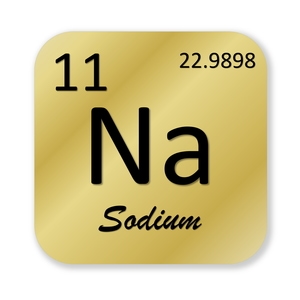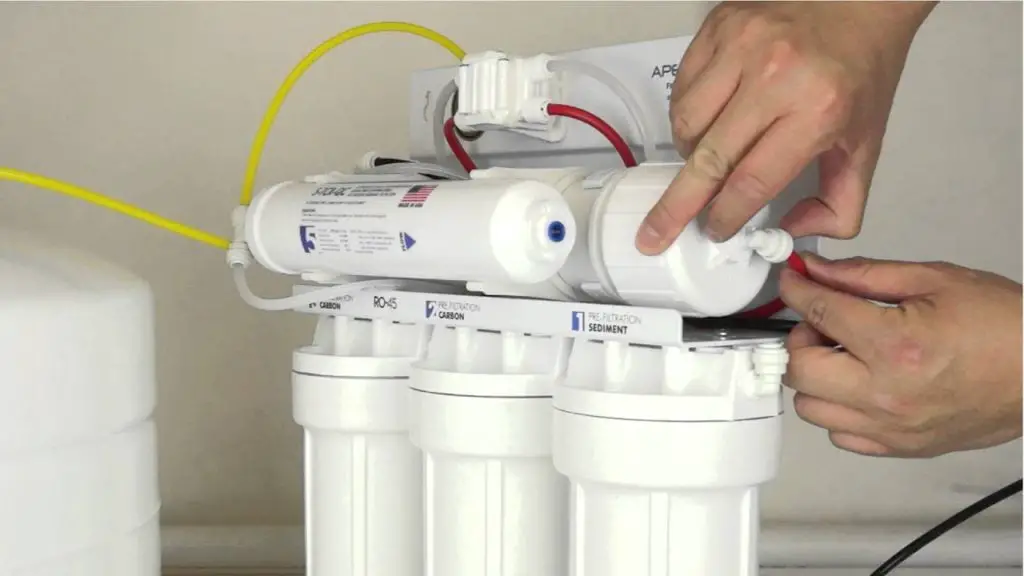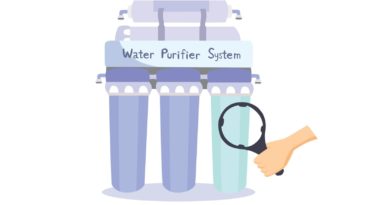How to Remove Salt From Softened Water
**Articles may contain links that I earn compensation for if clicked and you make a purchase. As an Amazon Associate, I earn from qualifying purchases. These earnings do not actually impact the price of the product or service.
Although, salt is a mineral that is necessary for life. It regulates the water balance in our bodies, transports nutrients around the body, and balances pH levels. However, too much salt can lead to high blood pressure or even death by stroke or heart attack. That’s why it’s important to remove excess salt from softened water before drinking it.
There are many reasons why you might want to remove the salt from your water, including health and taste. Whatever your motivation, it can be done with a few simple steps.
Table of Contents
How Much Sodium Do You Need?
Before we look at removing the salt from softened water, it is first important to look at how much sodium you actually need. Although many of us already know that too much salt isn’t good for us, some people aren’t sure what an appropriate amount is.
Americans ingest an average of around 3,400 mg of sodium each day. However, the Dietary Guidelines for Americans recommend that adults keep their salt intake to less than 2,300 mg per day—that’s the equivalent of 1 teaspoon table salt!
Here are the sodium levels of some common food items:
- 1 cup of milk: 107.4 mg
- 1 ounce of cheese: 176.1 mg
- ½ a bagel: 215.1 mg
- 3 ounces of cold cuts: 1,099.7 mg
- 2 slices bread: 117.8 mg
As you can get an idea from these values, it is easy to ingest more than the daily allowance of sodium without even knowing.

How Much Sodium Do You Need?
Eating too much sodium has been linked to a number of health problems, including:
- High blood pressure
- Stroke
- Heart disease and heart attacks
- Osteoporosis, kidney stones, and cancer
How Much Sodium Is Already in Your Water?
Before learning how to remove salt from softened water, it’s important to understand how much sodium is already present.
Tap water typically contains between 4 mg per 100 grams.
Remember that the recommended daily sodium intake is 2,300 mg (1 teaspoon), so it’s clear to see how much water you need to drink before your daily allowance has been reached!
How to Remove Salt From Softened Water By Installing RO System
The simplest way to make softened water drinkable is with a reverse-osmosis filter. Reverse osmosis is a water purification technology that uses a semi-permeable membrane to remove salt and other large particles from the drinking water.

As a result, you’ll have sodium-free, chemical-free, great-tasting, and perfectly safe drinking water. The process is energy-efficient and much cheaper than buying bottled water.
A reverse osmosis system is an excellent investment for a household that regularly drinks soft water from the tap, as it will save you money in the long run by reducing your sodium intake. Following are some more perks that you can avail yourself with reverse osmosis system:
RO is Highly Effective at Removing Contaminants
Reverse osmosis will remove contaminants, including sodium, from softened water with 97-99% efficiency.
This means that the remaining 1-3% of contaminants are removed post-treatment.
Treats Hard Water Too
Another great advantage is that some RO systems can treat hard water, too—meaning that you can remove excess calcium, magnesium, and other minerals from water.
This is great if you live in an area where the tap water contains high levels of these metals but avoid drinking distilled water.
Low Energy Usage
Many RO systems have meager energy usage rates—often using less than 50 watts per hour.
This means that the running costs are also meager, making RO an affordable way of removing salt from softened water.
RO Provides Clean Water On Demand
You won’t have to worry about whether the water is safe to drink with an RO system.
The cartridge will remove all contaminants and impurities from the softened water for a great-tasting and perfectly safe beverage.
No Excess Salt or Chemicals
As mentioned above, reverse osmosis systems only remove sodium in the water—not add anything extra in their place.
This means that you can enjoy a great-tasting, chemical-free glass of water whenever you want without worrying about excess salt or other harmful chemicals.
RO Results In Better-Tasting Water
One of the best advantages that reverse osmosis has over other purification systems is improving the taste of any water.
Chemicals or salt in the water can make it taste bad, which is why many people stick to bottled water.
With an RO system, you’ll remove these from your tap water for a great-tasting drink that you’ll want to keep on hand at all times!
Frequently Asked Questions
How Do You Ensure Softened Water is Drinkable?
Water has different levels of hardness. Hard water has a lot of minerals and high sodium levels. Softening hard water will lead to high sodium levels also.
A water softener will add 46 mg of sodium for every 100 mg of hardness minerals in the water. In this example, a water softener would produce 184 mg of sodium if 400 mg of calcium carbonate.
Some people use osmosis water filters to remove minerals. This way, the sodium level remains low after the filter has been used. How much sodium is too much? Check the detailed answer about “How much sodium do you need?” in the above section of this post.
Is it OK to water plants with softened water?
No, the high salt concentration will damage plants. Watering your garden with softened water is rarely a good idea. The main reason is that softened water usually has significant sodium because of the salt. Most plants can’t withstand much salt. Softened water effectively kills the plants in your garden from thirst.
Do carbon filters remove salt from softened water?
Salt can be removed by an appropriately sized activated carbon filter specifically designed to remove chlorine and chloramine. However, salt is very difficult for most filters to remove because it stresses the fiber membrane that traps particles that pass through the carbon bed.
Does Reverse Osmosis Remove All of the Salt?
Reverse osmosis removes salt, manganese, iron, fluoride, lead, and calcium. Most mineral components of drinking water are larger than water molecules and are trapped by the semi-permeable membrane after being filtered through a RO.
Can you filter sodium out of water?
Yes. The most effective method to get rid of sodium from soft water and a slew of other pollutants such as chlorine and lead is to install a reverse osmosis drinking water system in tandem with your water softeners.
Conclusion
Although there could be many other reasons you want to remove salt from your water, we hope that this article has given you a better understanding of the health implications and how much sodium should be ingested.
We want to thank you for reading and hope that our step-by-step guide and frequently asked questions have given you more insight into removing salt from softened water.


